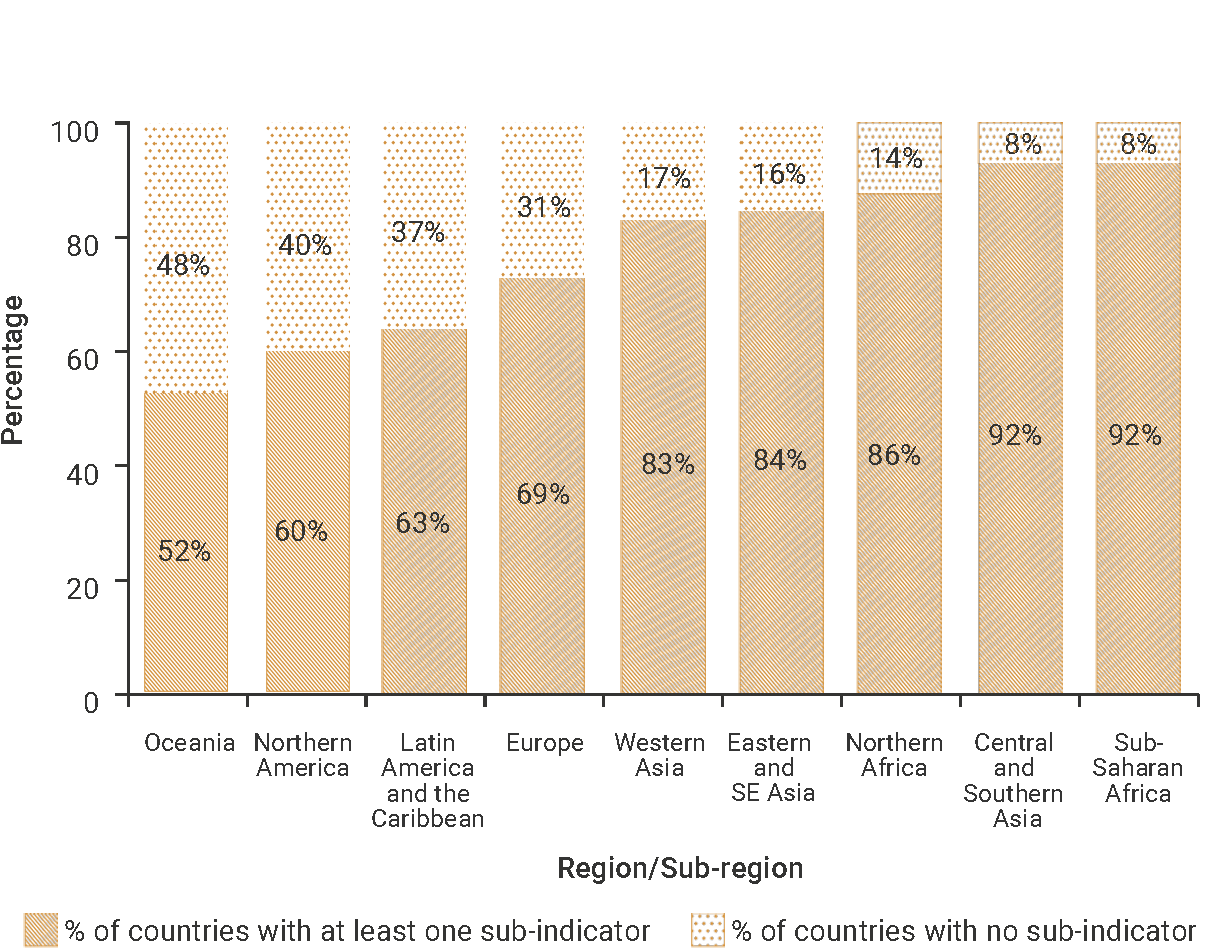SDG Indicator 15.4.1: Coverage by protected areas of important sites for mountain biodiversity
1. Key features and metadata
Definition: This indicator shows temporal trends in the mean percentage of each important site for mountain biodiversity (i.e. those that contribute significantly to the global persistence of biodiversity) covered by designated protected areas (PAs) and Other Effective Area-based Conservation Measures (OECMs).
| Sub-indicator | Disaggregated by |
|---|---|
|
ER_PTD_MTN Average proportion of Mountain Key Biodiversity Areas (KBAs) covered by protected areas (%) |
No current data disaggregation available. |
Sources of information: Ministries of Environment and other ministries and agencies (e.g. National Parks) responsible for the designation and maintenance of protected areas, Ramsar Convention and UNESCO World Heritage Convention and KBA consultative processes.
Related SDG Indicators: 14.5.1 (Coverage of protected areas in relation to marine areas) and 15.1.2 (Proportion of important sites for terrestrial and freshwater biodiversity that are covered by protected areas, by ecosystem type).
2. Data availability by region, SDG Global Database, as of 02 July 2025

3. Proposed disaggregation, links to policymaking and its impact
| Proposed disaggregation | Link to policymaking | Impact |
|---|---|---|
|
By ecosystem type (%)(Keith et al. 2020): Terrestrial:
Freshwater:
Applies to:
|
The disaggregation of mountain KBAs covered by protected areas (PAs) by ecosystem types provides an understanding about the varying diversity and ecological features of PAs. It also shows their differentiated coverage, their role in the global persistence of biodiversity and related ecosystem services and the specific pressures they are facing (Jacobs 2021). It helps identify ecosystem types where progress is expected and where policy interventions should be prioritized to improve an ecosystem’s well-being and extend its protection. | This disaggregation by ecosystem helps to understand the contribution of PAs to the conservation, restoration and sustainable use of ecosystems, biodiversity and their services. These include supporting life on Earth, elemental cycling, climate regulation, the provision of natural resources (i.e. food, materials, substances, and energy), and reducing poverty (IUCN-WCPA 2017). |
|
By management category (%)(IUCN 2012):
Applies to:
|
This disaggregation helps to identify the targeted policies needed for achieving the efficient conservation, restoration and sustainable use of mountain ecosystems and their services. It is also useful for assessing trends in the performance of PAs over time and enhancing their environmental benefits and cost-effectiveness. It is particularly relevant in the context of the Kunming-Montreal Global Biodiversity Framework(GBF), Target 3:Conserve 30% of Land, Waters and Seas (CBD 2022). |
Improving the management of mountain PAs not only helps to preserve biodiversity. It also provides valuable social and economic benefits. These include supporting local livelihoods; reducing the risks of natural disasters; hosting genetic resources; supporting recreation and tourism activities; and contributing to science, research, education, cultural, and other non-material values(Jacobs 2021). |
|
By taxonomic groups of specific interest(Butchart et al. 2012): Important Bird Areas (IBAs)/ Alliance for Zero Extinction sites (AZEs) Applies to:
|
This disaggregation provides useful information on specific taxonomic groups of interest like birds – Important Bird Areas (IBAs) – or highly threatened vertebrates and conifers – Alliance for Zero Extinction sites (AZEs) – occurring in important sites. This is useful information for decision-makers to monitor the effectiveness of PA designation on species protection and ecosystem conservation. It is also useful for selecting the most appropriate sites to expand the PA network. This disaggregation is consistent with Target 11 of the CBD Strategic Plan for biodiversity to expand PA coverage to target areas of particular importance for biodiversity conservation and ecosystem services (CBD 2020). | While there is evidence that PAs contribute to the protection of natural habitats and ecosystems, their impact on the preservation on species populations is less documented. IBAs and AZEs are identified global networks of relevant sites for biodiversity protection. However, PAs do not appear to have been designated to cover specifically these sites. Protecting them would enhance the contribution of PAs towards avoiding species loss and would help to address the current discrepancy between expanding PA areas and declining species populations. This disaggregation helps identify where PAs have the most beneficial impact on the species population, especially threated species, and to identify the types of interventions that are effective in curbing their decline. It is also useful for improving the PA coverage of important sites for species conservation(Butchart et al. 2012). |

